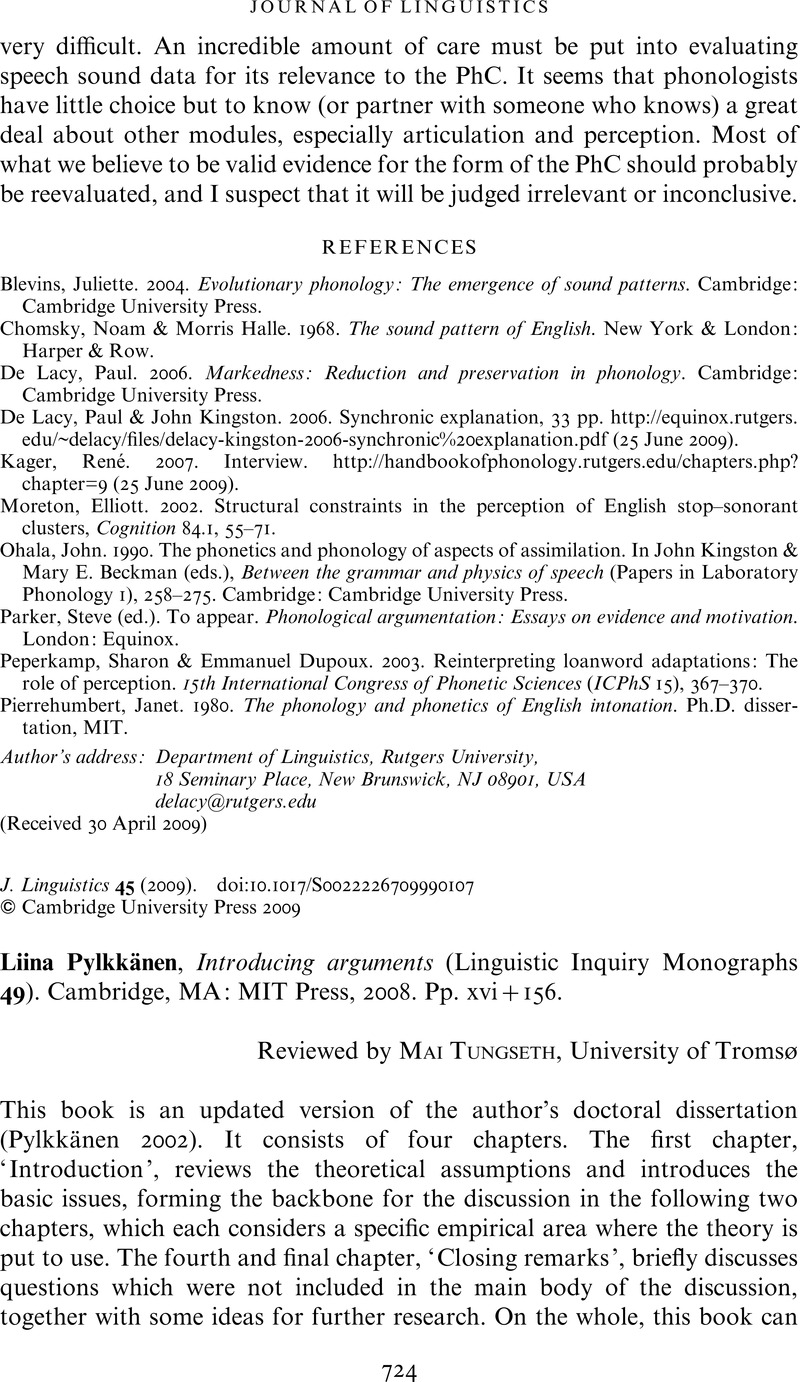No CrossRef data available.
Article contents
Liina Pylkkänen, Introducing arguments (Linguistic Inquiry Monographs 49). Cambridge, MA: MIT Press, 2008. Pp. xvi+156.
Review products
Liina Pylkkänen, Introducing arguments (Linguistic Inquiry Monographs 49). Cambridge, MA: MIT Press, 2008. Pp. xvi+156.
Published online by Cambridge University Press: 30 September 2009
Abstract
An abstract is not available for this content so a preview has been provided. Please use the Get access link above for information on how to access this content.

- Type
- Reviews
- Information
- Copyright
- Copyright © Cambridge University Press 2009
References
REFERENCES
Hale, Ken & Keyser, Samuel Jay. 2002. Prolegomenon to a theory of argument structure (Linguistic Inquiry Monographs 39). Cambridge, MA: MIT Press.Google Scholar
Kratzer, Angelika. 1996. Severing the external argument from the verb. In Rooryck, Johan & Zaring, Laurie (eds.), Phrase structure and the lexicon, 109–137. Dordrecht: Kluwer.Google Scholar
McGinnis, Martha. 2001. Object asymmetries in a phase theory of syntax. Actes du Congrès annuel de l'Association canadienne de linguistique (ACL)/Canadian Linguistic Association (CLA) Annual Conference Proceedings 2001, 133–144.Google Scholar
Parsons, Terence. 1990. Events in the semantics of English: A study in subatomic semantics. Cambridge, MA: MIT Press.Google Scholar


